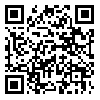Volume 27, Issue 4 (2021)
AIJH 2021, 27(4): 25-51 |
Back to browse issues page
1- Islamic Art, Ferdows Institute of Higher Education, Mashhad, Iran.
2- Faculty of Applied Arts, University of Art, Tehran , a.sheikhi@art.ac.ir
2- Faculty of Applied Arts, University of Art, Tehran , a.sheikhi@art.ac.ir
Abstract: (2023 Views)
In the city of Esfarayn, for the first time coins were minted during the Ilkhanid era. The aim of the current study is to examine the form and content of inscriptions on those coins and seek answer to the following questions: What are the motives of engraving on Esfarayn coins of the Ilkhani period? What meanings the inscriptions of Ilkhanid coins contain with? The research method applied here is historical, descriptive and analytical. The statistical population of the study is 42 coins minted in Esfarayn. The results show that the Ilkhanids designed a variety of designs such as pentagonal, hexagonal and octagonal stars, circle, mandala, multicolored flowers, clover flowers, circle, borders and horseman for coins. Calligraphic changes with Arabic, Persian, Uyghur, Chinese scripts and motifs multiplied on Esfarayn coins, with the appointment and removal of Ilkhan. Despite religious beliefs of Shamanism, Buddhism, Christianity and Jews, they established religious tolerance in the political arena of Iran by accepting Islam. In addition to Islamic rituals, they could also reflect their own religious rituals on the coins bearing cultural messages. The differentiation of Mongolian rulers from the Iranian people and their religious and governmental policies reflects most changes in terms of themes and contents reflecting on the coins that have been studied in three periods altogether.
Article Type: مقالات علمی پژوهشی |
Subject:
Arts and Humanities (General)
Received: 2020/03/7 | Accepted: 2020/05/13 | Published: 2021/01/1
Received: 2020/03/7 | Accepted: 2020/05/13 | Published: 2021/01/1
| Rights and permissions | |
 |
This work is licensed under a Creative Commons Attribution-NonCommercial 4.0 International License. |


